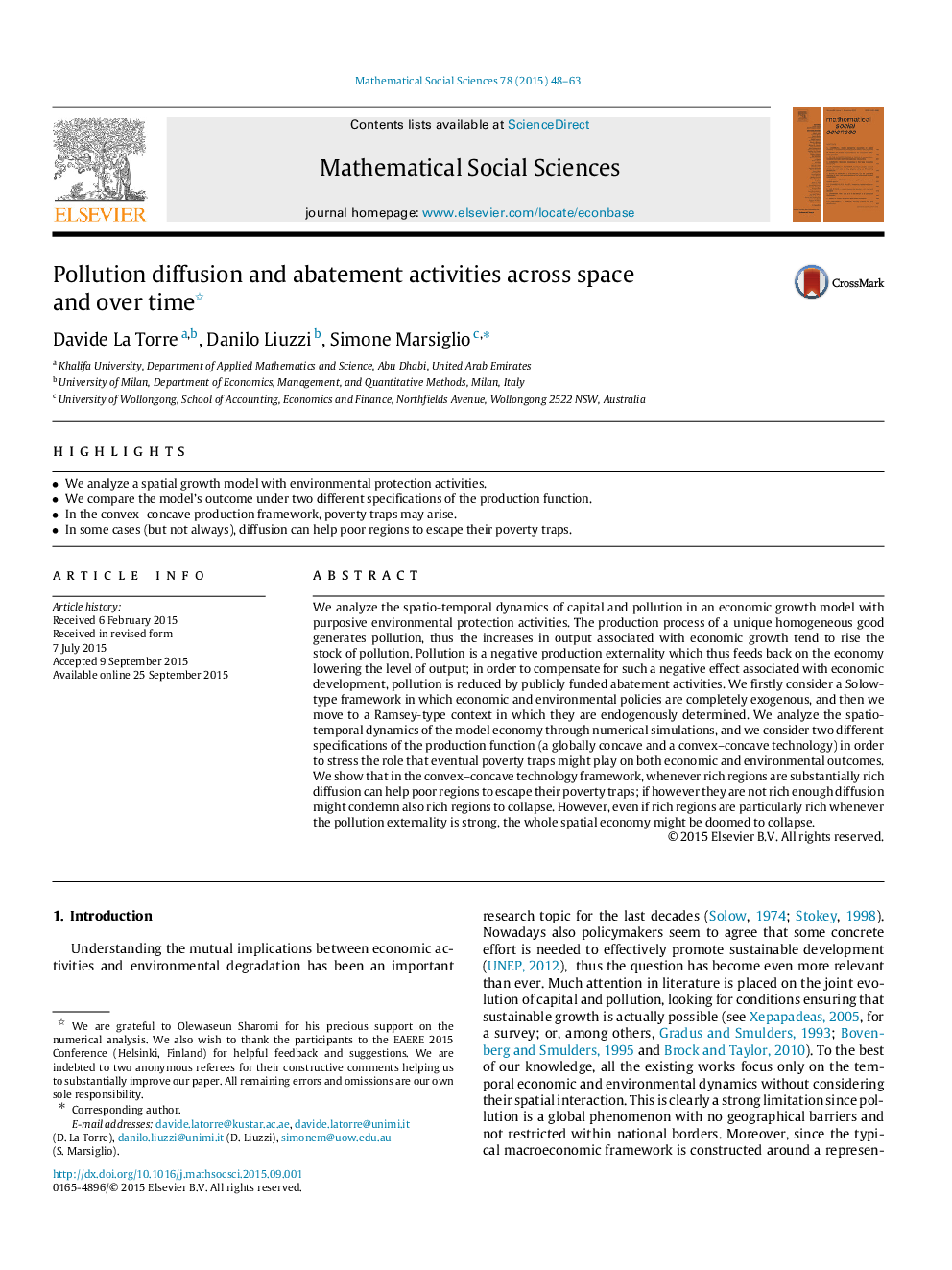| Article ID | Journal | Published Year | Pages | File Type |
|---|---|---|---|---|
| 972510 | Mathematical Social Sciences | 2015 | 16 Pages |
•We analyze a spatial growth model with environmental protection activities.•We compare the model’s outcome under two different specifications of the production function.•In the convex–concave production framework, poverty traps may arise.•In some cases (but not always), diffusion can help poor regions to escape their poverty traps.
We analyze the spatio-temporal dynamics of capital and pollution in an economic growth model with purposive environmental protection activities. The production process of a unique homogeneous good generates pollution, thus the increases in output associated with economic growth tend to rise the stock of pollution. Pollution is a negative production externality which thus feeds back on the economy lowering the level of output; in order to compensate for such a negative effect associated with economic development, pollution is reduced by publicly funded abatement activities. We firstly consider a Solow-type framework in which economic and environmental policies are completely exogenous, and then we move to a Ramsey-type context in which they are endogenously determined. We analyze the spatio-temporal dynamics of the model economy through numerical simulations, and we consider two different specifications of the production function (a globally concave and a convex–concave technology) in order to stress the role that eventual poverty traps might play on both economic and environmental outcomes. We show that in the convex–concave technology framework, whenever rich regions are substantially rich diffusion can help poor regions to escape their poverty traps; if however they are not rich enough diffusion might condemn also rich regions to collapse. However, even if rich regions are particularly rich whenever the pollution externality is strong, the whole spatial economy might be doomed to collapse.
